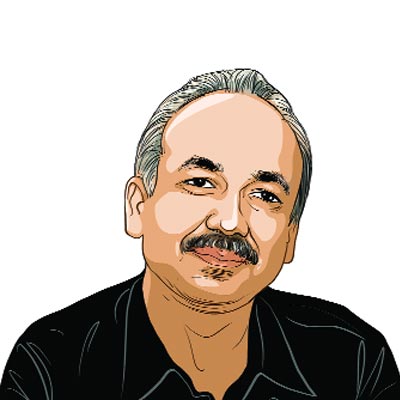Opinion How the story ends
In Nepal,civil society tried for power and failed.
These days,Nepal is as disillusioned with civil society as with its political parties,five years after the sweeping political transformation that led up to this situation,a change that began with a civil society-led mass movement.
Civil society had then commanded wide popular support,almost emerging as a credible alternative institution,at a time when the political leadership almost without exception was seen as corrupt,inefficient,and unable to improve Nepals economy. The former king,Gyanendra,tried to take advantage of the battered reputation of political parties,and took over power in February,2005,perhaps having already informed India and the US of his intentions. He says he planned to helm the nation for three years,first to control the Maoist insurgency (that had been raging for a decade,and had cost more than 14,000 lives),and then to gradually hand over power to political parties.
It was at this point that several known faces from NGOs,consultancies,former civil servants and politicians who had lost elections in the past came forward under the mantle of civil society,opposing the royal takeover.
They did not ignore the unpopularity of political leaders either. In the early days of protest meetings,civil society groups invited political leaders,including G.P. Koirala and Madhav Nepal,but made it clear that they were not welcome on the dais.
Civil society leaders were also popular in the eyes of the donors and the international community that supported this movement for democracy. The vilification of mainstream political parties also gave the Communist Party of Nepal-Maoists an open forum,and allowed them to take the lead in the movement. The Nepali media too,by and large,became part of this movement for democracy,and worked in coordination with civil society. The Nepali Congress and the Communist Party of Nepal-Unified Marxist Leninist (CPN-UML) gradually took the front seat of the mass movement,alongside the Maoists,when civil society realised that it could not substitute for political parties,no matter how unpopular they were.
However,the record of the political parties that these civil society-media groups backed,and the anarchy and instability that followed,have made many of these leading faces unpopular with the people now. They are accused of having double standards on issues like state brutality,corruption,and lack of accountability in politics and governance.
Some statistics of the number of people killed by the state,or in political violence in the post-2006 era estimate it at being much more than the 21 people killed during the movement against the monarchy. More than 350 cases of murder,abduction and confiscation of individual property,involving top Maoist leaders and politicians,have been withdrawn. But Nepali civil society has not spoken out,in contrast to what they did during the monarchist regime. That the current dispensation is unprecedently corrupt is openly claimed in the media; some of the leaders are still running rich NGOs or are associated with ethnic and other movements that receive huge funds from donors. In short,civil society leaders are not viewed with respect,and differently from politicians any more.
The Anna Hazare phenomenon is being talked about,debated and discussed in Nepal with its own bias. But invariably,it gets lumped with the failure and the double standards of Nepali civil society. However,one stark similarity lies in politicians having to take a backseat in the Ramlila maidan,just as in Kathmandu,in the first few meetings during the monarchist regime.
Keshav Poudel,the editor of the fortnightly magazine New Spotlight,said on Twitter: Parliament is dead,long live Anna. The comment is no doubt based on the Nepali experience,in which the leaders at the crest of the movement for democracy undermined institutions including parliament,resulting in an erosion of the authority of the state which is now almost at the verge of collapse. And civil society leaders silence is being viewed as their culpability in the overall failure.
Judging by the Nepali experience,the challenges before the Anna Hazare-led movement are many. Will it join hands with non-Congress or non-UPA parties? Will it support one or the other group in the next election? And most important,will the faces around Anna strictly maintain their watchdog status,or will they develop political ambitions and affiliations?
Civil society,in Nepals context,is a group that wants to rule or enjoy power without accountability. They have shunned open activity except occasionally appearing in the print and electronic media,given their friendly association of the past. Nevertheless,the fallout of the Anna Hazare movement will be closely observed in neighbouring Nepal.


